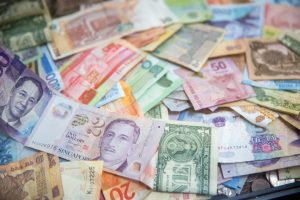Forex charts are an essential tool for traders who want to monitor and analyze the movements of currency pairs. These charts provide a visual representation of the price movements over a set period, allowing traders to identify trends and predict future price movements. Reading forex charts may seem daunting at first, but with a bit of practice and knowledge, anyone can master it.
Types of Forex Charts
There are three main types of forex charts: line charts, bar charts, and candlestick charts. Each chart type has its own advantages and disadvantages, and it’s up to the trader to choose which one suits their trading style.
Line charts are the simplest type of forex chart, and they show the closing prices of a currency pair over a set period. Line charts are useful for showing long-term trends, but they don’t provide much detail about price movements during the day.
Bar charts show the opening, closing, high, and low prices of a currency pair over a set period. They provide more information than line charts and are useful for identifying trends over shorter periods. Bar charts are also useful for identifying support and resistance levels.
Candlestick charts are the most popular type of forex chart. They show the opening, closing, high, and low prices of a currency pair over a set period, just like bar charts. However, candlestick charts provide more information about price movements by using colored candlesticks to represent the price movements of a currency pair. Green candlesticks represent bullish movements (when the closing price is higher than the opening price), while red candlesticks represent bearish movements (when the closing price is lower than the opening price).
Reading Forex Charts
Once you’ve chosen the type of forex chart that suits your trading style, it’s time to start reading it. The first thing to look for is the time frame of the chart. Forex charts can be set to different time frames, ranging from one minute to one month. It’s important to choose the time frame that best suits your trading style and goals.
Next, look at the price axis on the right-hand side of the chart. This axis shows the price of the currency pair you’re interested in. The price is usually shown in pips, which is the smallest unit of measurement in the forex market. Each pip represents a change in the fourth decimal place of a currency pair. For example, if the EUR/USD pair moves from 1.1000 to 1.1001, that’s a one-pip movement.
The next thing to look for is the chart pattern. Chart patterns are formed by the price movements of a currency pair over a set period. There are two main types of chart patterns: trend and range. Trend patterns show the direction of the price movements, while range patterns show that the price is moving within a certain range.
To identify trend patterns, look for a series of higher highs and higher lows (for an uptrend) or lower highs and lower lows (for a downtrend). To identify range patterns, look for a series of similar highs and lows.
Support and resistance levels are also important to look for when reading forex charts. Support levels are price levels where the currency pair has previously bounced back up from, while resistance levels are price levels where the currency pair has previously bounced back down from. These levels can be used as entry and exit points for trades.
Conclusion
Reading forex charts may seem daunting at first, but with practice and knowledge, anyone can master it. Choosing the right type of chart and time frame is important, as is looking for chart patterns and support and resistance levels. By using forex charts to analyze the movements of currency pairs, traders can make informed decisions about their trades and potentially increase their profits.






